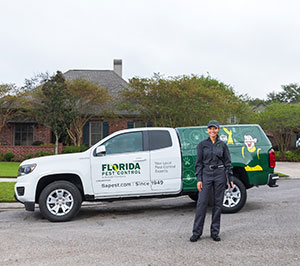Expert A1 Charlotte Bed Bug Exterminator - Quality Service Ensured
Bed Insect Therapy Malfunction: Contrasting Chemical Vs. Non-Chemical Solutions
In the world of parasite control, especially when dealing with the relentless issue of bed insects, the option in between chemical and non-chemical treatment services can be a pivotal one. Both approaches supply distinct benefits and downsides, affecting factors such as efficiency, security factors to consider, and total cost. By checking out the nuanced details of each approach, a clearer understanding of which path to go after in addressing a bed insect infestation can be acquired.
Effectiveness of Chemical Therapies
Chemical therapies for bed pest problems have actually been widely acknowledged for their powerful and quick efficiency in eradicating these bugs. When considering the efficiency of chemical treatments, it is critical to recognize that they can offer a complete and fast service to a bed bug issue. Specialist pest control experts often count on pesticides to target bed bugs at numerous phases of their life cycle, including eggs, nymphs, and grownups. These chemicals commonly work by disrupting the bed pests' nerves, leading to paralysis and ultimate death.
Additionally, chemical treatments have the advantage of offering residual effects, implying that they can continue to remove bed bugs also after the initial application. This recurring activity is especially useful in combating any kind of possible re-infestations. Furthermore, the quick activity of chemical treatments can bring relief to individuals encountering extreme bed bug invasions, permitting them to reclaim control of their space rapidly.
Security Interest In Chemical Solutions
One critical facet that calls for careful factor to consider when making use of chemical services for bed bug treatment is making certain the safety of residents and the atmosphere. Direct exposure to certain chemicals utilized in bed bug therapies can lead to respiratory system problems, skin irritability, or various other unfavorable reactions, especially in individuals with pre-existing problems or sensitivities.
In addition, the ecological effect of chemical solutions is another considerable consideration. Some chemicals utilized in bed bug treatments may be hazardous to helpful pests, wildlife, and ecosystems if they seep right into the soil or water supply. It is important to make use of chemical treatments carefully, following security standards, and considering much less hazardous choices to mitigate these dangers and ensure the secure and efficient management of bed insect invasions.
Advantages of Non-Chemical Approaches
Taking into consideration the possible safety issues and environmental effect associated with chemical services for bed insect therapy, discovering non-chemical techniques provides an appealing choice with numerous distinctive advantages. Non-chemical approaches supply a more secure option for homes, particularly those with youngsters, people, or animals conscious extreme chemicals. These methods get rid of the threats of direct exposure to harmful materials, decreasing the capacity for unfavorable health effects. Furthermore, non-chemical treatments are eco pleasant, as they do not contribute to air or water contamination, making them a lasting selection for pest control.
Furthermore, non-chemical services can be reliable in targeting bed insects, including hard-to-reach areas where chemical treatments might not permeate. Methods such as warm treatment, vacuuming, heavy steam cleaning, and bed mattress encasements give thorough obliteration click now without the usage of damaging chemicals. Moreover, non-chemical approaches can be much less turbulent, calling for very little prep work and permitting quicker reentry general pest control right into treated locations. Generally, choosing non-chemical bed insect therapy methods not only focuses on safety and environmental management however additionally guarantees reliable and extensive pest control.
Limitations of Non-Chemical Treatments

In addition, non-chemical treatments usually need numerous applications to achieve successful obliteration. This can be time-consuming and might not constantly guarantee complete removal of all bed bugs and their eggs, especially in hard-to-reach or covert locations.
Additionally, the success of non-chemical therapies greatly depends on appropriate execution and thoroughness, which can be challenging for individuals without specialist know-how. Insufficient application of non-chemical approaches may result in incomplete removal, leading to persistent problems and the need for additional treatments.
As a result, while non-chemical therapies have their benefits, it is important to acknowledge these restrictions and consider them when establishing one of the most effective method for handling bed insect problems.
Price Comparison: Chemical Vs. Non-Chemical Options
Provided the restrictions associated with non-chemical treatments, a necessary aspect to examine in the context of bed bug administration is the price comparison in between chemical and non-chemical options. In comparison, non-chemical treatments like warm read this article therapy or heavy steam can be more costly, with costs varying from $1,000 to $6,000 for an entire home. While the preliminary price of chemical treatments may seem lower, several therapies might be called for to fully eliminate the problem, possibly enhancing the total cost.
Conclusion

Considering the prospective safety problems and ecological impact linked with chemical remedies for bed pest treatment, checking out non-chemical approaches presents an encouraging alternative with a number of distinctive benefits.Given the constraints linked with non-chemical treatments, a crucial element to review in the context of bed pest management is the expense contrast between chemical and non-chemical choices. In contrast, non-chemical therapies like warmth therapy or heavy steam can be much more expensive, with prices varying from $1,000 to $6,000 for an entire home. While the first price of chemical therapies might appear lower, numerous therapies may be called for to fully eradicate the infestation, possibly boosting the total cost.In conclusion, when comparing chemical and non-chemical bed bug therapy choices, it is necessary to take into consideration effectiveness, security, advantages, constraints, and price.